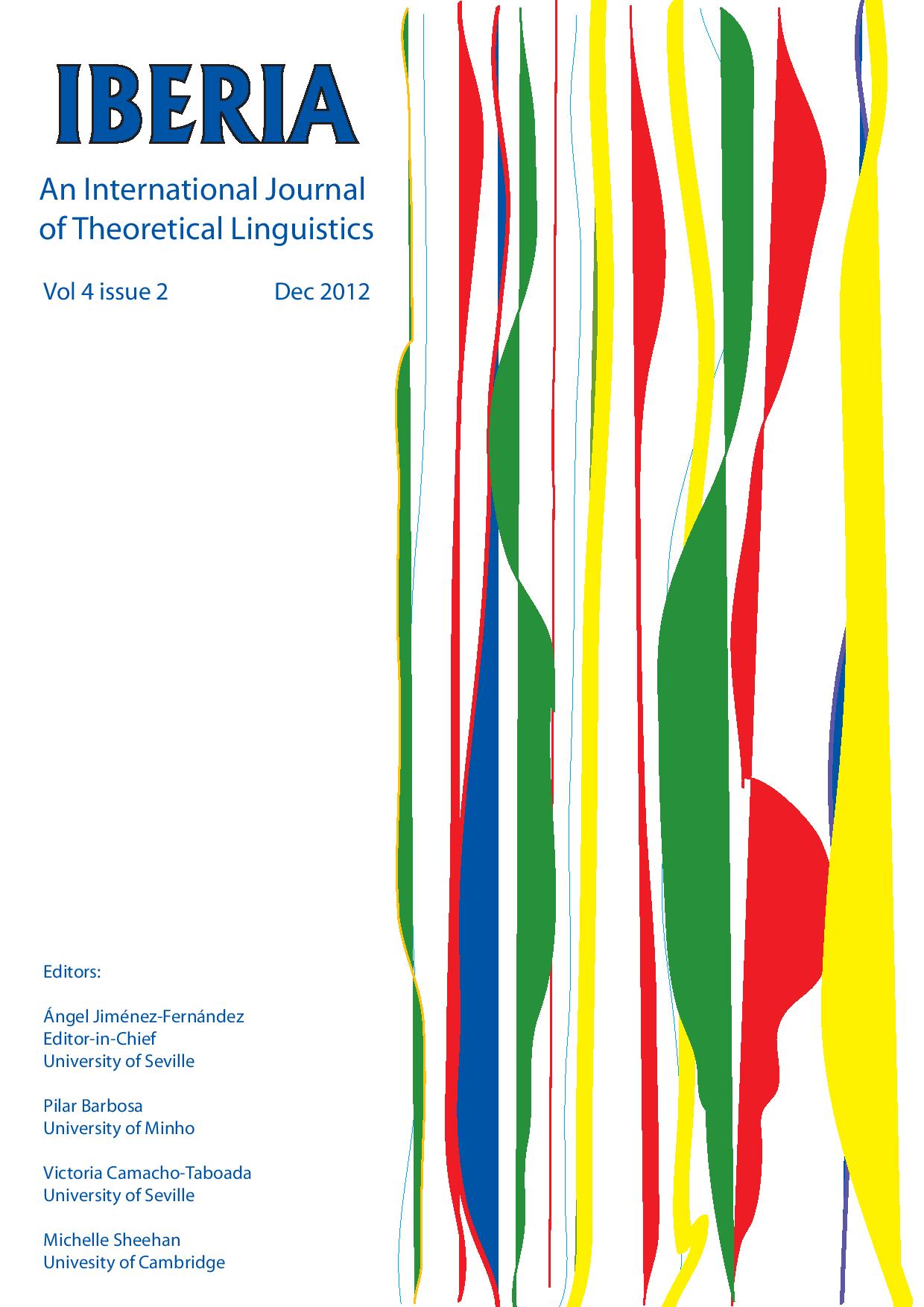Deriving the Cartography of the Japanese Right Periphery: The Case of Sentence-Final Discourse Particles
Keywords:
cartography, sentence-final particles, selectional requirement, speech act, MergeAbstract
The cartographic structure of the Japanese right periphery has been investigated extensively over recent years. (See, for example, Inoue 2007, Ueda 2007, Saito 2009, Endo 2010, and the references cited there.) This paper examines the distributions of the sentence-final discourse particles and presents an account in terms of their lexical properties. We argue, following Endo (2010), that the particles, wa, yo, ne and na, indeed instantiate a cartographic structure in the right periphery. Then, we examine the lexical properties of each of those particles, and show that they explain the observed hierarchy. More specifically, we argue that the selectional requirement of wa and the specific speech acts the four particles are associated with yield the hierarchy wa < yo < ne/na. This conclusion implies that the cartographic structure of the Japanese sentence-final discourse particles can be considered a consequence of the Merge operation that reflects the lexical properties of those particles.
Downloads
References
Chomsky, Noam. 1994. Bare Phrase Structure. In Gert Webelhuth (ed.), Government and Binding Theory and the Minimalist Program. 383-439. Cambridge, Mass.: MIT Press.
Cinque, Guglielmo. 1999. Adverbs and Functional Heads: A Cross-linguistic Perspective. Oxford: Oxford University Press.
Endo, Yoshio. 2010. The Cartography of Sentence Final Particles. In Nobuko Hasegawa (ed.), New Developments in Syntactic Theory and the Analysis of Japanese: Beyond Propositions. 67-94. Tokyo: Kaitakusha. (in Japanese)
Haraguchi, Tomoko. 2012. Distributions of Modals and Sentence Final Particles in Japanese. Ms., Nanzan University.
Hiraiwa, Ken & Shinichiro Ishihara. 2002. Missing Links: Cleft, Sluicing, and ‘no da’ Construction in Japanese. Proceedings of Humit 2001, MIT Working Papers in Linguistics 43, 35-54.
Inoue, Kazuko. 2007. A Reexamination of Japanese Modals. In Nobuko Hasegawa (ed.), Main Clause Phenomena in Japanese. 227-260. Tokyo: Kaitakusha. (in Japanese)
Lahiri, Utpal. 1991. Embedded Interrogatives and Predicates that Embed Them. Doctoral dissertation, MIT.
Matsumoto, Eri. 2010. Quotative Expressions and Sentential Complementation in Japanese. Bachelor’s thesis, Nanzan University.
Plann, Susan. 1982. Indirect Questions in Spanish. Linguistic Inquiry 13, 297-312. Rivero, María-Luisa. 1994. On Indirect Questions, Commands, and Spanish
Quotative Que. Linguistic Inquiry 25, 547-554.
Saito, Mamoru. 2009. Selection and Clause Types in Japanese. Presented at the International Conference on Sentence Types: Ten Years after, Universität Frankfurt am Main.
Tenny, Carol. 2006. Evidentiality, Experiencers and the Syntax of Sentience in Japanese. Journal of East Asian Linguistics 15, 195-244.
Ueda, Yukiko. 2007. Syntactic Structure and Person Restrictions of Japanese Modals. In Nobuko Hasegawa (ed.), Main Clause Phenomena in Japanese. 123-150. Tokyo: Kaitakusha. (in Japanese)
Downloads
How to Cite
Issue
Section
License
Las ediciones impresa y electrónica de esta Revista son editadas por el Secretariado de Publicaciones de la Universidad de Sevilla, siendo necesario citar la procedencia en cualquier reproducción parcial o total.Salvo indicación contraria, todos los contenidos de la edición electrónica se distribuyen bajo una licencia de uso y distribución “Creative Commons Atribución-NoComercial-SinDerivar 4.0 Internacional”

